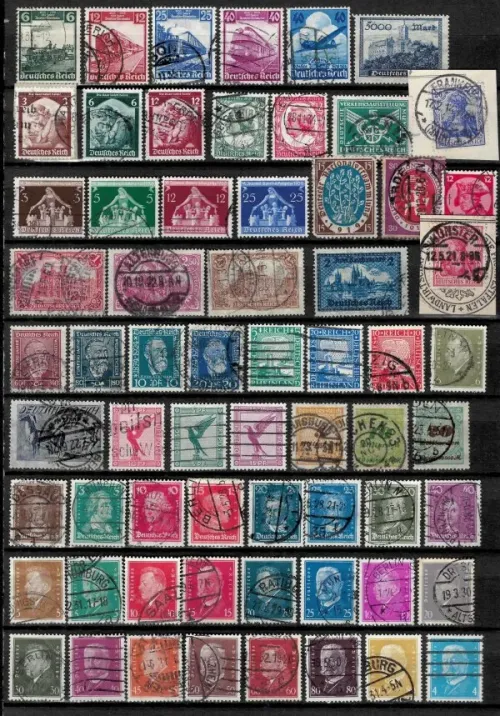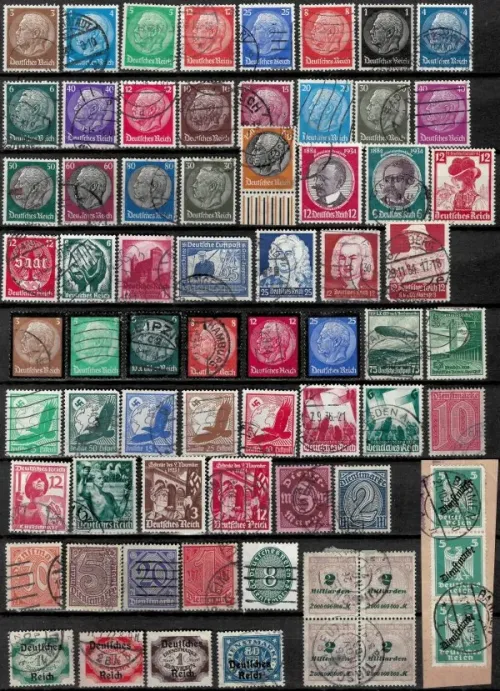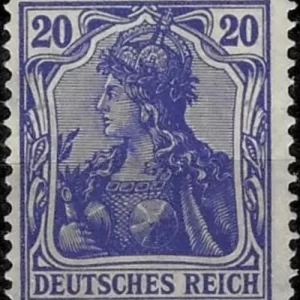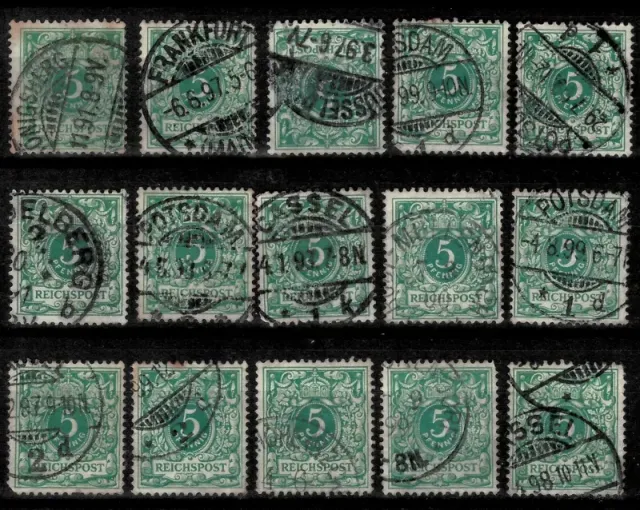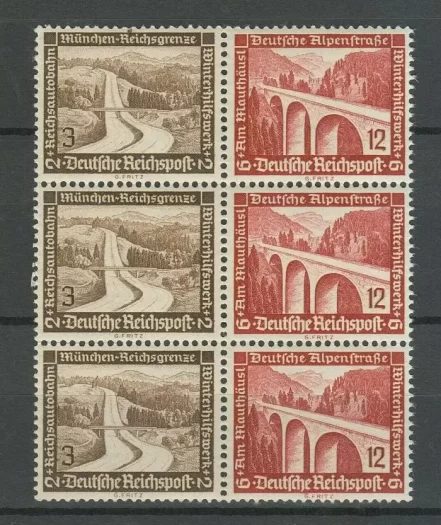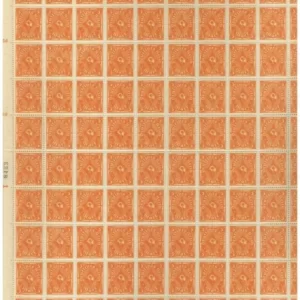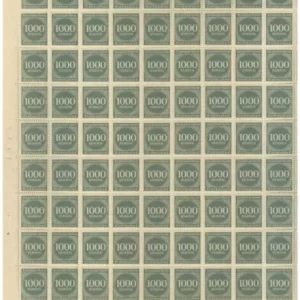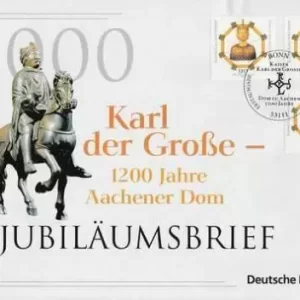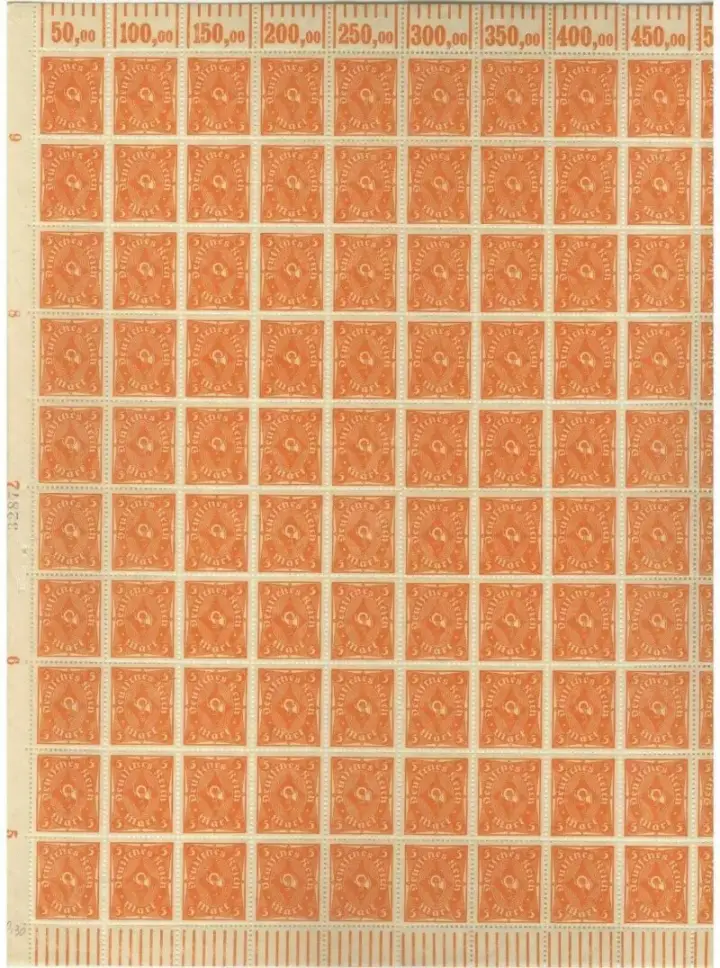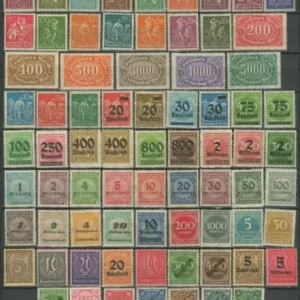German Reich year 1920 – 1940 Used postage stamps collection
The postage stamps of the German Reich from 1920 to 1940 reflect a significant period in Germany’s history, covering the post-World War I era, the Weimar Republic, and the early years of Nazi Germany. Here’s an overview of key stamp issues during these years:
1. Weimar Republic Era (1919-1933)
- Inflation Stamps (1920s): After World War I, Germany experienced severe hyperinflation, and this was reflected in its stamps. The values printed on stamps escalated rapidly during the early 1920s, with overprinted and high-denomination stamps becoming common.
- Definitive and Commemorative Stamps: During the 1920s, stamps featured motifs such as landscapes, famous German personalities, and monuments. They also depicted symbols of labor and industry, reflecting themes of rebuilding and progress.
- Hindenburg Series (1932): In 1932, stamps featuring Paul von Hindenburg, Germany’s president, were issued. These would later be overprinted with the swastika when the Nazi Party came to power.
2. Nazi Germany Era (1933-1945)
- National Socialist Symbols (1933-1940): After the Nazi Party took power in 1933, stamps began to feature the swastika, Nazi leaders like Adolf Hitler, and propaganda themes emphasizing German nationalism and military strength.
- Nazi Propaganda Stamps: There were several series emphasizing the might of the Third Reich, featuring Hitler’s portrait, military parades, and anniversaries of the Nazi Party. Themes of unity, pride, and the Third Reich’s grandeur were prominently depicted.
- Olympic Games (1936): A notable series commemorated the 1936 Berlin Olympic Games, with imagery that aimed to portray Germany as powerful and culturally sophisticated.
- Expansion of Territory: Stamps during the late 1930s also celebrated the annexation of territories such as Austria (1938, known as the Anschluss) and the Sudetenland. They often had overprints or inscriptions noting these geopolitical changes.
Collecting stamps from this period can provide insights into the tumultuous history of Germany, reflecting both its economic struggles and political shifts. Some of these stamps are highly collectible due to their historical significance, though stamps featuring Nazi symbols can be sensitive items in certain contexts.

